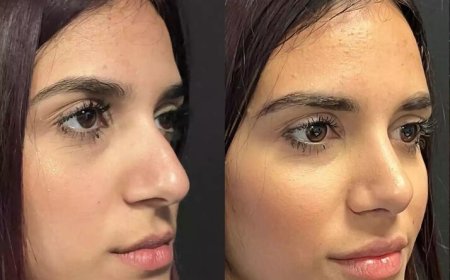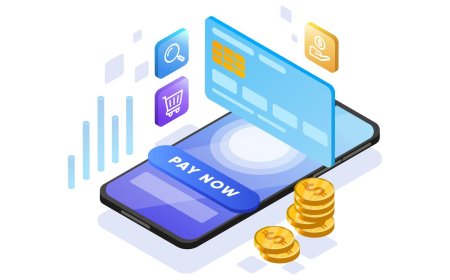Top Web Development Trends Changing the Internet Today
Top Web Development Trends Changing the Internet Today include AI integration, PWAs, responsive design, and enhanced user experiences

Introduction
The internet that we are in today is nothing like the internet that was in the past a few years back. Sites have also become faster, smarter and interacted. The change can be traced to new trends in web development that are silently changing the way we surf, shop, learn and communicate over the web. Whether you are a new web developer or are interested in knowing more about what goes on behind the modern websites, you are about to find the best trends that you must know- no jargon involved. You will get to see what these trends solve, the reason why it is important, as well as how they are improving the internet experience for all.
1. Mobile-First Design: Thinking Small First
The Problem: Phones Don't work websites
As smartphones generate over 50 percent of web traffic worldwide nowadays, it is annoying to visit a site that just does not fit on a small screen, it does not load fast, and the buttons are so small that one can barely tap them.
The Cause of It Happening
Most of the websites that existed decades ago were designed on desktops and they were never modified to suit the mobile user. Poor experiences, high bounce rates and loss of trust is a result of this.
The Answer: Mobile First Development
Developers no longer design to fit large screens and scale down to fit into smartphones but the opposite, and this has become a norm. This is to ensure that the content is readable, there is ease of navigation and all works fine on any device.
2. Progressive Web Apps (PWAs): The App-Like Website
The Problem: Users Want Speed and Offline Access
Apps are fast and reliable, but not everyone wants to download them. Traditional websites, on the other hand, often require a constant internet connection and can be slow to load.
What Are PWAs?
Progressive Web Apps combine the best parts of apps and websites. They work in a browser but feel like a native appfast, offline-capable, and installable on a users device if desired.
Real-Life Example
Twitter Lite is a PWA that loads in seconds, uses less data, and works even with poor network conditionsperfect for users in areas with slow internet.
Opposing View
Some argue PWAs still cant replace full mobile apps due to limited access to device features. But for many businesses, they strike a practical balance between speed and accessibility.
3. Voice Search Optimization: Communicating with the Internet
The Issue: People Are Speaking, But Websites Aren't Paying Attention
Voice search is becoming more popular as smart speakers and voice assistants become more common. However, the majority of websites are not designed to manage spoken, natural queries.
The Significance of This
Users want succinct, straightforward responses when they ask questions like "Where's the nearest grocery store open now?" Search results frequently don't display websites that aren't voice optimized.
4. Dark Mode: A Combination of Comfort and Style
The issue: Eye strain and excessive battery use
It can be uncomfortable to stare at bright screens all day, especially in dimly lit areas. Additionally, it depletes mobile batteries more quickly.
5. Serverless Architecture: Speeding Things Up Behind the Scenes
The Problem: Complex, Costly Web Hosting
Traditionally, websites needed dedicated servers to run. These could be expensive and hard to maintain, especially for small businesses.
The Solution
Serverless architecture allows developers to build and run websites without managing servers. This means websites can scale quickly, run faster, and be cheaper to maintain.
6. Single-Page Applications (SPAs): Instant And Easy Navigation
The Problem: Sluggish Page loads:- Waiting and loading a new page when clicking something can be tiring. On the old styles of web sites, everything is being reloaded del novo any time something has to change.
The Way Out: SPAs:- Single-Page Applications are initially loaded and thereafter dynamically updating the content without the need of reloading the page. This ensures easier and quick navigation.
7. Micro-Interactions and Motion UI:Giving the Web Some Life
The Problem Boring Static Web Pages:- Websites which appear like plain text documents are not user friendly. One will lose visitors in case it does not have anything to engage in, or something to look at.
The Solution:- Small animations, transitions (called micro-interactions), and the revolutionary hover effect have found their place in the arsenal of developers to instruct clients and make websites more exciting. This aids the usability and keeps the user interested.
Real-Life Scenario:- Micro-interaction is when you visit a social media site and give your favorite post a like; the heart pops up. These are minor details that make an experience of a user enjoyable and understandable.
Conclusion
The internet is being used in different ways and web development courses in Chandigarh It is fast adopting these changes. Whether it was mobile-first design, dark mode, voice optimization, and so forth, all these trends are the solutions to real-life problems that make the experience of the web better.Keeping abreast with these trends is not only important to begin with as a layman, it is also important to know what is possible. The net no longer presents a set of static pages. It is dynamic, interactive and user responsive. and is being defined more and more each day by those developers driving the future forward; one trend at a time.
























